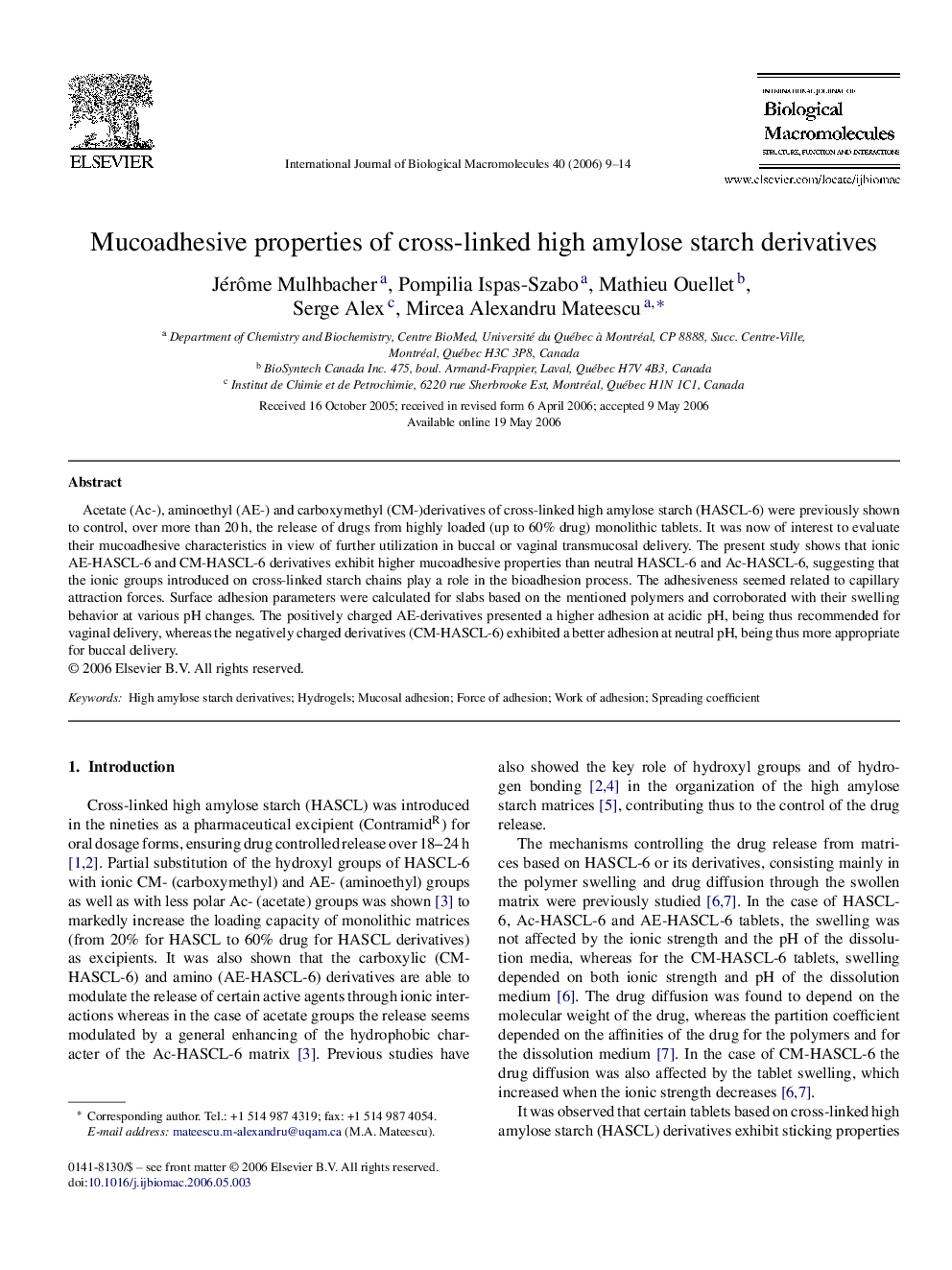| Article ID | Journal | Published Year | Pages | File Type |
|---|---|---|---|---|
| 1987799 | International Journal of Biological Macromolecules | 2006 | 6 Pages |
Acetate (Ac-), aminoethyl (AE-) and carboxymethyl (CM-)derivatives of cross-linked high amylose starch (HASCL-6) were previously shown to control, over more than 20 h, the release of drugs from highly loaded (up to 60% drug) monolithic tablets. It was now of interest to evaluate their mucoadhesive characteristics in view of further utilization in buccal or vaginal transmucosal delivery. The present study shows that ionic AE-HASCL-6 and CM-HASCL-6 derivatives exhibit higher mucoadhesive properties than neutral HASCL-6 and Ac-HASCL-6, suggesting that the ionic groups introduced on cross-linked starch chains play a role in the bioadhesion process. The adhesiveness seemed related to capillary attraction forces. Surface adhesion parameters were calculated for slabs based on the mentioned polymers and corroborated with their swelling behavior at various pH changes. The positively charged AE-derivatives presented a higher adhesion at acidic pH, being thus recommended for vaginal delivery, whereas the negatively charged derivatives (CM-HASCL-6) exhibited a better adhesion at neutral pH, being thus more appropriate for buccal delivery.
